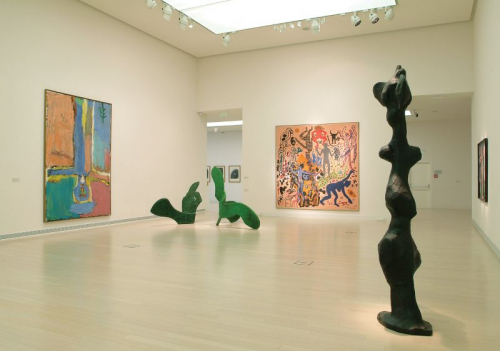Széchy’s oeuvre is wide-ranging and complex. In her early period, during the 1980s, she worked with graphics and offset prints on the one hand, and on the other hand, using old photographs, she created paper works that were redrawn, repainted, manipulated with textiles and wire, broken down into grids, depicting various group images and tableaux, ironically evoking the past. Her paper sculptures are three-dimensional, torn and sewn, boxed works. The Ludwig Museum’s collection includes two of these works from her early period in Hungary, before her emigration to the USA. Both The Second World War and Little Dolls depict two figures – soldiers and dolls respectively. Széchy used old photographs from World War I and World War II to make several of her anti-war offset prints and paper sculptures. One of these is her paper work The Second World War, in which she fragmented the war scenes by cutting up the parts, and then incorporated her own subjective ideas in a unique way: she made the horrors of war close and tangible for her contemporaries, taking the edge off the very essence of war, i.e. aggression, through the materials and forms.

